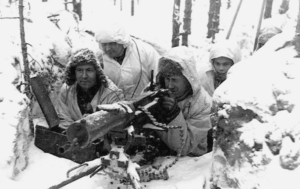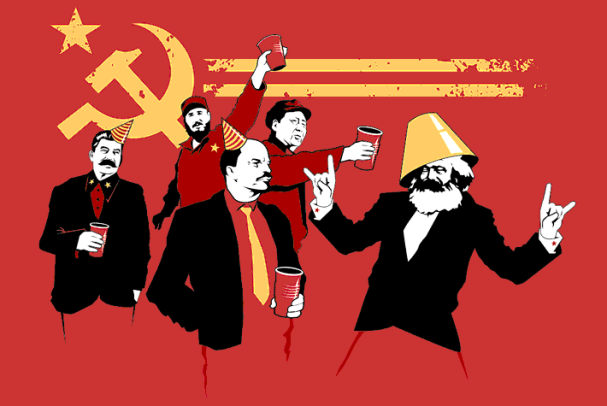
In 1938, the Soviet Union reached out to Finland’s government to inform them that Stalin believed war to be inevitable with Germany and that the Soviet Union wanted Finish lands and islands in order to advance and fight the Germans. A previous Russian territory, Finland refused all Soviet advances to take their lands and remained hostile to Soviet involvement in their country. After the Non-Aggression Pact between Nazi Germany and the Soviet Union was signed, eastern Europe was divided between spheres of influence between the two nations. Finland, alongside most other Baltic countries, were incorporated in the Soviet sphere of influence. As the Soviet Union began to set up bases throughout the Baltic nations, Finland refused and started mobilizing its military. Final negotiations between the two nations failed and the Soviet Union prepared for war. In a speech delivered through radio to the entire country, Minister of Foreign Affairs, Vyacheslav Molotov, the Soviet people were informed of the failed negotiations and that “the Finnish government has adopted an uncompromising and hostile attitude towards our country.” Molotov continued to explain that as a result of this hostility the non-aggression pact between the two countries had been broken. He stated in this speech that the goal of the Soviet Union was to protect its people in Leningrad, which Molotov said was extremely vulnerable to a hostile Finland. Molotov finished his speech by denying that the USSR was seeking to annex all of Finland and instead reiterated that the Soviet Union was just trying to protect its own interests and people by gaining limited Finnish territory.
Once it was clear that Finland would not give any territory to the Soviet Union, an incident occurred near Mainila in November of 1939 when a Soviet border post was bombed and several soldiers were killed. Although it was never confirmed who did the actual shelling at the time the Soviet Union blamed it on the Fins but it has since been revealed that the Soviet Union bombed its own post to give it reason to invade Finland. Stalin then ordered 450,000 Soviet solders into Finland and bombed the capital of Helsinki. They also tried unsuccessfully to gain the support of the people and working class by establishing the Finnish Democratic Republic, a communist puppet government. The Soviet military had just emerged from Stalin’s purges and its leadership structure was extremely diminished and inexperienced. Their soldiers were not equipped with cold weather gear and they were not issued white uniforms to camouflage themselves from the Fins. The Finish military made their defenses at the Mannerheim Line around the Karelian Isthmus with around 150,000 men. The winter of 1939-1940 was the coldest in years and the Soviet military was completely unprepared for the cold and the amount of snow, which the Fins used against them by skiiing around the Russian soldiers and then attacking. The war lasted throughout the winter and the Soviets were repelled at every turn until the Russian military regrouped and broke through Finnish defenses in some parts of the Karelian Isthmus. After it was clear that the Finnish military could not continue a prolongued war against the Soviet military and a peace treaty was ratified in March of 1940.
Although this war was a war of protecting Soviet interests, according to Molotov in his speech, this was a failed war to conquer all of Finland. The Soviets were able to gain around 11% of Finland from the Fins but Finland was allowed to remain an independent nation and the war humiliated the USSR in the eyes of the world. Over 300,000 Soviet soldiers were recorded as casualties and the war made it clear that the Soviet military lacked effective leadership, structure, and tactics. Already planning a war against the Soviet Union, Hitler believed that he would have an easy time conquering Russia due to their military blunders and lack of preparation. He used this logic a year later when he did follow through with an invasion of Russia and almost conquered Moscow. Stalin and the new military leadership realized they needed new logistical and leadership infrastructures and they needed new tactics for winter warfare. However, none of these reforms were complete by the time of Operation Barbarossa. Overall, the Winter War revealed the damages done by Stalin’s purges, the need for modernization and reform within the Soviet military, and the assumption that the USSR would be easily conquered by Hitler and Nazi Germany.
Sources Used:
https://en.wikipedia.org/wiki/Winter_War
http://wwarii.com/blog/archives/the-winter-war-how-the-gallant-finns-kill-250000-soviets/
https://upload.wikimedia.org/wikipedia/commons/d/dc/Winter_war.jpgf

The “Winter War” certainly offered a sobering wake-up call about Soviet preparedness for the the all out engagement that was to come. The father of a dear friend of mine first saw battle in the Winter War and I will always remember his story about how they made “ice cream” from sweetened condensed milk in the snow. Spelling can be tricky — we call the country “Finland” (one “n”), but the ethnic majority there are the “Finns” (two n’s). Also, how does this post relate to soviet culture or the prompt for this week? http://amynelson.net/sovietculturef15/blogpost-guidelines/purges-and-the-coming-war-prompt-6/
LikeLike
This battle for Finland epitomizes the failure of the Soviet Union as a military-heavy country. The USSR was always one of the most powerful nations in the world in many regards, but its military strength was pathetic to say the least. The only reason the Germans could not capture much land in the country was because the Russian winter froze them out. They never “fought” the US during the Cold War, therefore nuclear power does not count towards military success. Finally, they lost Afghanistan to the Taliban, a group of ill-equipped guerrilla warriors. If a country wants to talk big, they must prove themselves.
LikeLike
I have heard about this war in passing, but have never explored it fully, so thank you for going into detail about it. I find it very ironic that the Soviets were not prepared for the cold and snow as they are from Russia.
LikeLike
Wow this was awesome. This gave a lot of good information about the disagreements between the Russians and Finnish! It also shows how much of an effect Stalin’s Purges had on the military. Continually, surprising that even though they weren’t prepared for this cold winter that they still broke through and were able to force a treaty agreement. Good Job!
LikeLike
You have a great recap of the war. It was very entertaining and easy to read. It thought it was really funny that the Russians said that Finland was being hostile and uncompromising for not wanting to be occupied by the Soviets. I’m suprised Finland was able to hold Russia off for so long. It really shows how different and multipolar the power dynamic was in Europe at the time.
LikeLike
i personally have always been fascinated by the winter war, it remains a prime example of a small, but well organized, well prepared force using mobility and terrain to their advantage. the Finns bottle necked the Soviets on the isthmus and used the higher mobility and organization of their troops in the north to cut supply lines, encircle, separate and destroy Russian units time and time again. Their supreme efficiency at small unit tactics, maneuver warfare and hit and run tactics allowed them to inflict vastly higher casualties on the numerically and technologically superior Russian force.
LikeLike
Second paragraph should be edited to say Finns not Fins
LikeLike